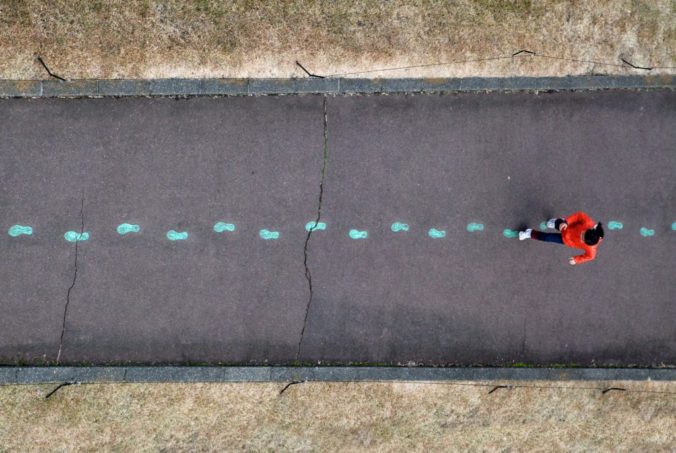
Hello everyone and welcome to my first blog post! My name is Maika Houde, and I am a third-year political science student from Nelson, BC. Aside from school, I enjoy discovering new coffee shops, reading, going on walks and doing yoga/working out. I also love baking and spend a lot of time decorating cakes. I will use any event/celebration as an excuse to take a break from school and pull out my baking supplies.
On the topic of EDCI 337, this week we have analyzed different theories of learning styles. We started by examining Allan Paivio’s Dual Coding Theory, which suggests that the brain has two separate channels for processing information: verbal and visual. Verbal systems process linguistic matters, while visual systems examine images and graphs (Pavio & Clark, 2006). We continued by exploring Sweller’s Cognitive Load Theory, which implies that the mind is full of different capabilities that one uses when learning (Sweller et. al, 1998, pp. 251-296). Additionally, we analyze Mayer’s theory of Cognitivism which hypothesizes that active processing happens when we filter, select, integrate and organize information to create logical representations in our minds. Furthermore, he explains that we can reduce cognitive load by avoiding redundancy, staying coherent, signalling critical information, and remaining contingent (Hasenclever et. al, 1996, pp. 177-228). We can draw from these theories when examining the purpose of multimedia learning. More specifically, obtaining information through different learning forms facilitates information processing and absorption without overloading one’s cognitive capacity (Watt, 2023). For example, screencasting is a medium that simplifies the learning process by engaging the audience through both their verbal/auditory and visual learning channels. As a result, obtaining an intricate grasp of a topic becomes easy and manageable for the mind.
Analyzing the different learning styles has made me realize the importance of engaging our diverse learning channels to support a comprehensive understanding of topics (Watt, 2023). From this understanding, I have recognized that Paivio’s theory of two separate channels encompasses verbal and visual learning but does not go into debt on kinesthetic learning. Nevertheless, certain people are kinesthetic learners (Csapo & Hayen, 2006, pp. 129-133). Hence, I believe we must consider where object manipulation fits into his theory and how physical action assists with learning processes.
Here are couple of images of some cakes/cupcakes I made if interested:)



Work Cited
Csapo, N., & Hayen, R. (2006). The role of learning styles in the teaching/learning process. Issues in information systems, 7(1), 129-133. Retrieved January 21, 2023, from https://iacis.org/iis/2006/Csapo_Hayen.pdf
Hasenclever, A., Mayer, P., & Rittberger, V. (1996). Interests, power, knowledge: the study of international regimes. Mershon International Studies Review, 40(Supplement_2), 177-228. Retrieved January 20, 2022, from https://academic.oup.com/isr/article-abstract/40/Supplement_2/177/1886553?login=false
Paivio, A., & Clark, J. M. (2006, September). Dual coding theory and education. In Draft chapter presented at the conference on Pathways to Literacy Achievement for High Poverty Children at The University of Michigan School of Education. Citeseer. Retrieved January 20, 2022, from https://www.researchgate.net/profile/Jim-Clark-10/publication/225249172_Dual_Coding_Theory_and_Education/links/542d58970cf277d58e8cc084/Dual-Coding-Theory-and-Education.pdf
Sweller, J., Van Merrienboer, J. J., & Paas, F. G. (1998). Cognitive architecture and instructional design. Educational psychology review, 10(3), 251-296. Retrieved January 20, 2022, from https://idp.springer.com/authorize/casa?redirect_uri=https://link.springer.com/article/10.1023/A:1022193728205&casa_token=Mur_acqrH4IAAAAA:LTU5pK59qKQahlTJ5fcCLMwC770nR1YBvkZ3YEiaQKJcPg9brMVOyHH0z01j2vdP9VOysDaqhGSi7KoG
Watt, M. (2023, January 14). W2: How do we learn? EDCI 337. Retrieved January 21, 2023, from https://edtechuvic.ca/edci337/2023/01/14/w2-how-do-we-learn/

2023-01-22 at 10:15 pm
Hey Maika! just wanted to preface by saying I love your post and your baking photos look phenomenal. Your blog post does a great job of describing the different learning theories presented by Mayer and Paivio. Engaging with and learning more about with these different theories of learning styles has also made me realize the importance utilizing diverse learning channels to support a comprehensive understanding of topics. Great post, thanks for sharing.
2023-02-02 at 1:26 pm
Thank you Hannah. I appreciate your feedback:)